Who protects, rescues and cares for KANGAROOS? ...
...NOT State or Federal GOVERNMENT - Admin or Legistature:
THE COMMERCIAL SLAUGHTER OF OUR NATIONAL ICON
For more than six decades, the state & federal Government organisations (like DCCEEW and NPWS),
who are responsible for the PROTECTION OF OUR KANGAROOS,
have also been responsible for what they call "KANGAROO MANAGEMENT"
which exists to feed a government sanctioned wildlife trade of Kangaroo body parts
through the very influential and equally greedy COMMERCIAL KANGAROO KILLING INDUSTRY.
The lies and myths about kangaroos, that are dispersed by this industry and its goverment cohorts,
are designed to devalue the inherent worth of KANGAROOS
and to dismiss the significant contribution of these highly evolved sentient beings to Australia.

Photo by Zoe/AJP - Development rules over Kangaroo Habitat
This agressive and violent Colonial biogotry is so abhorent
that the majority of people pretend or deny that it is even happening.
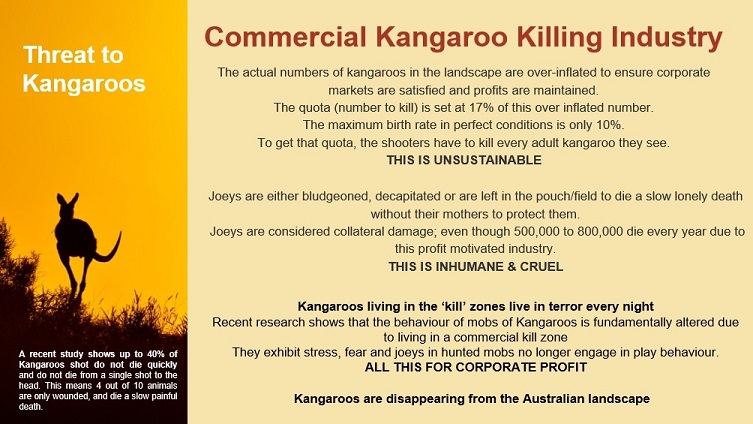
Photo from BMWKD24 - The reality of the KANGAROO killing industry
It is only within this secrecy or denial that...
...the Kangaroo killing industry is allowed to slaughter millions of our kangaroos every year for profit and with no accountability
Written off as unrecorded collateral damage: the in-pouch joeys and at-foot joeys die slowly and painfully without their mothers.
...MORONIC individuals or groups of humans, who are so SPIRITUALLY DEPLETED that they want to TORTURE and KILL DEFENCELESS ANIMALS,
think it is both acceptable and their 'right' to ACT OUT THE MOST CRUEL and HEINOUS ACTS towards our national icon.
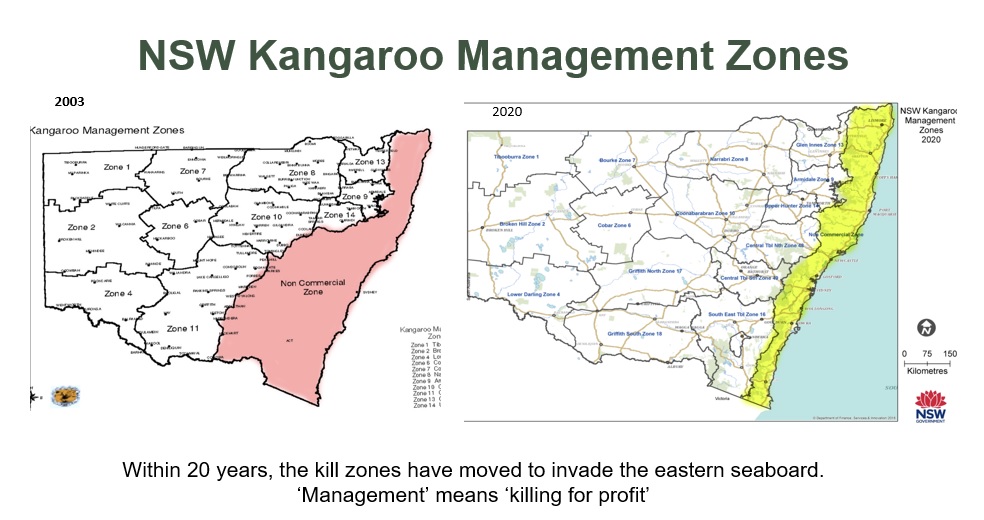
Photo from BMWKD 24 - If they have to keep increasing areas of commercial killing zones; that is proof of the depletion of Kangaroo populations

Photo from Flyer
<=============================================================>
NOT the main ANIMAL PROTECTION ORGANISATIONS:
Over the last few decades, the upper management of 'Animal welfare organisations',
like the RSPCA and WIRES, have lost sight of the reason they exist;
and are acting more like ‘resource gathering’ than ‘animal protection’ organisations.
The upper management of both organisations are holding on to money donated to them
and not passing it down to the animals or the people or facilities that look after the animals.
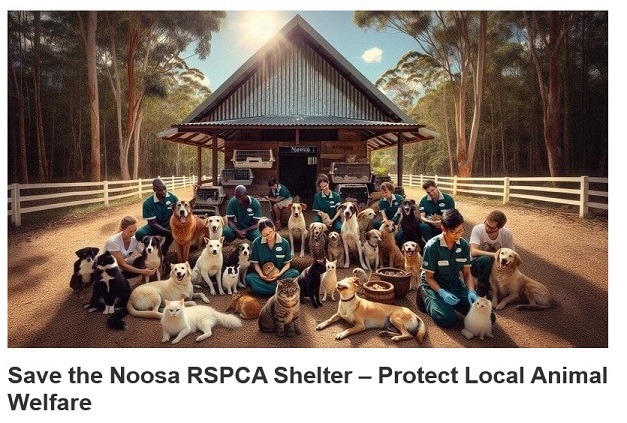
Photo from change.org petition
THE NEGLECT AND/OR PERSECUTION OF OUR KANGAROO RESCUERS & CARERS
In 2021, the property of a very experienced and capable Kangaroo Rescuer and carer was invaded by two NGO organisations.
A fence hanger Kangaroo called Dolores who was 4 months into her recovery, was taken from the property and euthanised.
These organisations later charged that Rescuer and Carer with 'aggravated animal cruelty'
when all she had done was save this Kangaroo's life
and recognise that Dolores had choosen to live.
Five years later, this rescuer and carer was convicted of aggravated animal cruelty
to the horror of rescuers and carers and kangaroo advocates all over the country.
Now Rescuers and Carers of Kangaroos live in fear of these two organisations persecuting them
if they dare save a Kangaroos life
so they euthanise rather than treat our national icon.
Possumwood April 2025 QUOTE "It is deeply saddening and ominous to hear that a well-respected wildlife carer,
who worked tirelessly during the 2019–2020 bushfires and acted in good faith to help a native animal,
has been charged and convicted of animal cruelty.
The prosecution (RSPCA & WIRES), backed by lawyers, a barrister, and a vet
(who has no experience with the treatment of fence-injured animals or the husbandry of macropods),
had access to the over $90 million donated during the Black Summer fires to HELP animals injured in the bushfires.
Meanwhile, carers (everyday people who dedicate their own time and money to care for wildlife)
rarely have the financial means to defend themselves.
Possumwood, which has rescued, treated, and rehabilitated hundreds of macropod fence hangers,
was not permitted to give evidence about what to expect during the recovery of a fence hanger.
Possumwood June 2025: QUOTE “LIFE AT THE FRONTLINE
Wildlife carers are still outraged by the treatment a well-respected carer, Tracy, received at the hands of our justice system.
Wildlife carers work at the frontline of Australia’s war on wildlife.
As first responders to unimaginable trauma, suffering, and cruelty; wildlife rescuers, euthanasers, and carers experience significant
emotional distress doing a job that the government has chosen neither to do itself nor to support...
...Possumwood was recently called to help a kangaroo with a rope around her neck, spotted on the side of a local road.
Steve and two of our younger volunteers were not prepared for what they found.
A person had managed to tie a rope around this poor kangaroo’s neck and drag her along his driveway and the road.
Horrified by the cruelty, they witnessed her last attempts to breathe before she died.
And yet, a well-respected wildlife carer was convicted of aggravated animal cruelty; because she was trying to rehabilitate a fence hanger.
An American academic and bird vet (who has never rehabilitated a kangaroo, let alone a fence hanger,
and is completely unaware of the realities of wildlife care in Australia)
gave his opinion that the kangaroo should have seen a vet every week...
...the magistrate who refused to allow Possumwood to present a description of the recovery time frame and stages for fence hangers
should have visited us, rather than relying solely on the opinion of an American academic bird vet.
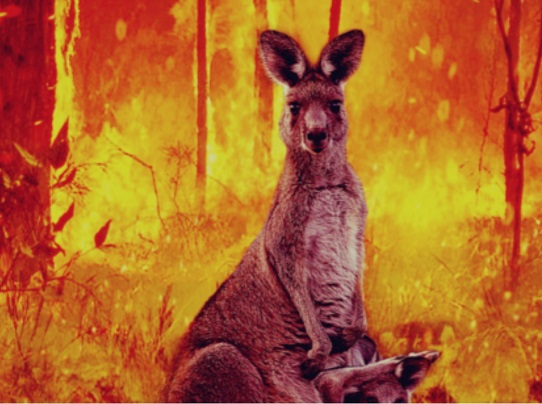
Photo by Kangaroos Alive
<=============================================================>
YES, ABORIGINAL ELDERS & CULTURAL LORE PROTECTS KANGAROOS:
Uncle Dean Kelly, Yuin
QUOTE: ‘Buru, the kangaroo, has been protected for thousands of years:
we are mentally, physically and spiritually connected to this ancient animal through our living cultural lore.
We all must protect Buru, the kangaroo.‘
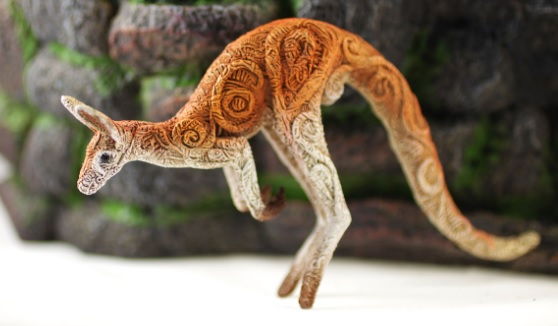
Photo from internet
Aunty Ro Mudyin Godwin, PALAWA
QUOTE
: 'Kangaroos are a Sacred Totem Animal to many of we Indigenous people,
they are NOT a commodity to be used & abused
by either the NSW Government or by the Commercial Kangaroo Killing Industry.
Kangaroos are essential in the regeneration of Song Lines, Dreaming Tracks
& they ensure the interconnectedness of Country.
They ensure, that The Dreaming remains alive & strong.
They ARE as my Family Totem, & as a Sacred Totem Animal to many of we Indigenous people,
OUR connection that we have to Ancestors,
yet they are called a pest & gunned down in indiscriminate slaughter by those,
who by carrying out that behaviour, SHOW they have no clue about Country or Kangaroos,
who, unlike them, are the FIRST Australians.
In areas where Kangaroos have been gunned down into localised extinctions,
Culture is dying, as is our connection to Ancestors.
Kangaroos are a Keystone Species
upon which various other species of indigenous flora & fauna depend for their own survival,
& again, where we have seen Kangaroos gunned down into localised extinctions
we have seen the die off of vast amounts of Indigenous Flora & Fauna.
Kangaroos are essential in the regeneration of Country,
they aerate soils, play an essential role in seed dispersal & in germination
as the toe nail indentations left by the kangaroo, acts as a trap for any seeds & moisture.
Kangaroos also carry seeds on their fur, this also aids in seed dispersal & in the regeneration of Country.
Kangaroos top graze dry foliage, graze undergrowth levels which mitigate bushfire impacts,
& in areas where Kangaroos have been slaughtered out
we are seeing an increase in both bushfire activity & in bushfire intensity,
yet those drowning in pathetic backwards colonialism STILL don’t get it,
they still don’t understand that, unlike them, Kangaroos belong here
& are NEEDED to ensure healthy functioning ecosystems.
Their answer & the answer of the NSW Govt is to simply gun them down'.
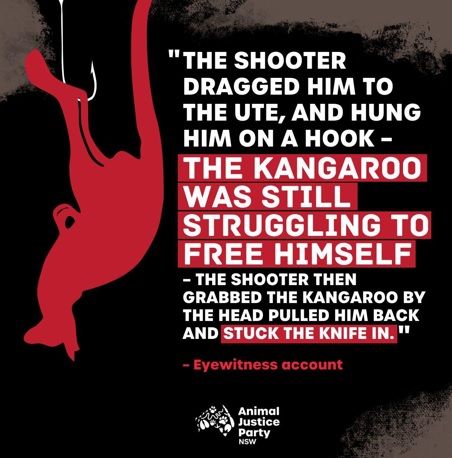
Photo from AJP NSW
Uncle Max Dulumunmun Harrison, YUIN
QUOTE:
'How long have those kangaroos been hopping on this land?
They are not intruding on farmers or developers, or roadways.
It is humans invading the kangaroos space and it is the kangaroo that is being disregarded.
Stepping outside respect lore, leads to an imbalance in the totemic system and consequently mass slaughter and illness.
Those indigenous brothers and sisters who hold their lore and practice culture through the wisdom of the ancients
know to protect the kangaroo from a harvest of exportation, exploitation, and extinction,
by not supporting such a cruel and greedy industry.
We need to live with this wonderful animal that they call the kangaroo.
We need to understand their ways and live in harmony with them.
We need to look and learn how to live on this land without destruction.
Then we can live in harmony with every living thing on this land they call Australia.
Yuin Declaration for Kangaroos - Article 1 says
'The kangaroo has inhabited the Australian continent for over 20 million years, living in peace and ecological harmony.
The kangaroo co-exits today as they have for millenniums, in balance with the flora fauna and livings being of this land.
This ancient iconic native animal, therefore claims sovereign rights above and beyond any human claims of dominion over them.
Today we declare, from this day forward, all kangaroos shall be justly protected from all harms caused by human abuse and exploitation.
We vow to hold governments and their citizenry accountable for any breaches of this sovereignty.'
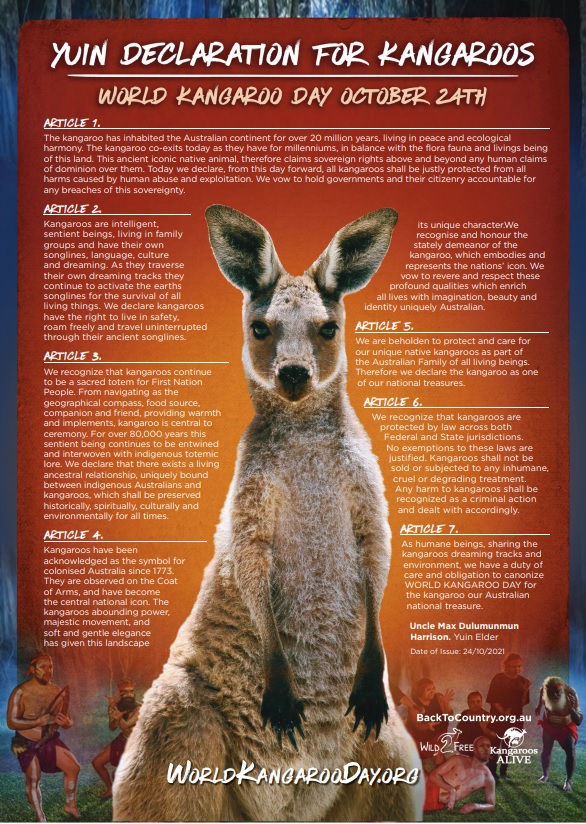
Photo by Kangaroos Alive
<=============================================================>
YES, ONLY INDIVIDUALS & SMALL GROUPS of Rescuers & Carers DO Protect Kangaroos:
Only individual/small groups of locals and volunteer KANGAROOS RESCUERS & CARERS
are in fact rescuing, protecting and caring for our kangaroos.
For example: the Werrington/Penrith Kangaroos are being boxed into smaller and smaller areas,
due to corruption and malfeasance in politics and the development industry,
so that they end up caught on fences or killed on the roads.
The Blue Mountains National Park World Heritage Area is a few kilometres from these kangaroos
but the local community, who has the backing of ecologists and Kangaroo Rescuers/Carers,
cannot get support from any Government office or NGO to save these kangaroos.
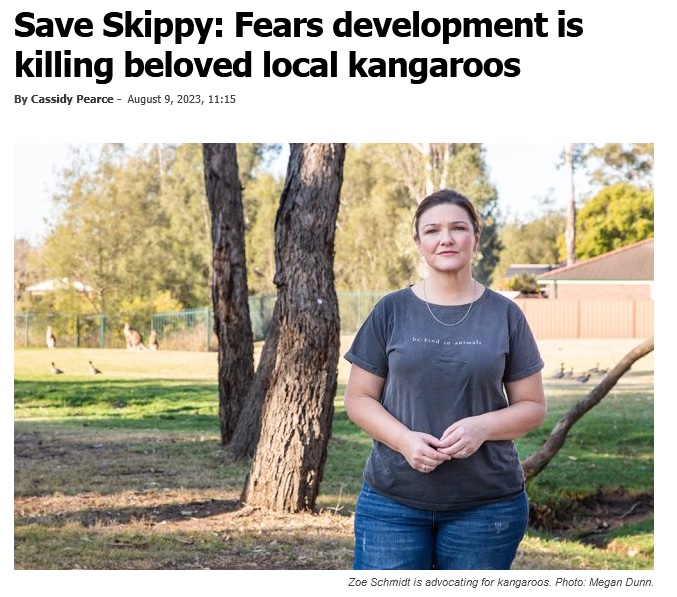
Photo from local newspaper
<=============================================================>
Full Description of Government attitude to our national icon and its habitat
The Government Agency - NSW National Parks and Wildlife Service (NPWS) - operates under the National Parks and Wildlife Act 1974
and the Government Department - Department of Climate Change, Energy, the Environment and Water (DoCCEEW)
- operates under the Environment Protection and Biodiversity Conservation Act 1999.
The
NPWS ACT states in section 12 - Powers and functions of Service that ...
"The Service is to carry out such works and activities as the Minister may direct, either generally or in a particular case, in relation to the conservation and protection of wildlife (including threatened species, populations and ecological communities, and their habitats)." Similiar directives are also found in sections 45, 56, 68 and 70.
The website of NPWS NSW appears as if they are travel agents, who want to generate more business opportunities for themselves.
At the bottom of the 'Conservation & Heritage' tab is a picture of a beautiful King Parrot with the words 'Native Plant & Animal Licencing'.
The 'Native wildlife licensing' link shows very questionable Conservation activities like...
"CONTROL OR HARM NATIVE ANIMALS IMPACTING ON COMMUNITIES OR PROPERTY" and
"MANAGE KANGAROO POPULATIONS"
The 'Manage Kangaroo Populations' links to
DoCCEEW website and shows...
"
Licences to harm kangaroos or
Kangaroo Management as a prominent entry."
The licences to kill kangaroos and other native wildlife are given out by NPWS
The NPWS KangarooManagement statement says that...
The DoCCEEW aims to get a balance between Conserving all Macropod species and...
1. managing damage caused to privately owned land
2. Environmental Sustainability.
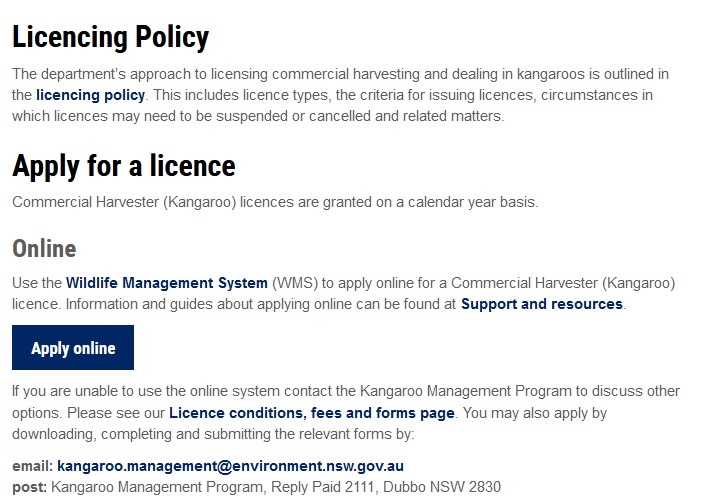
It is not soft pawed Keystone Macropod species who cause damage to the land.
It is Colonial orientated human beings and their imported hard hooved stock animals
who have always been the destroyers of the natural world - land, air and water.
You don't achieve Environmental Sustainability by eliminating the keystone species
that has been Australia's Environmental Engineer for over 20 million years.
Industry capture or influence of prominent people in NPWS and DoCCEEW
are allowing and encouraging the elimination/slaughter of our Kangaroos
which is contrary to every concept of Conservation and Sustainability in this country.
The DoCCEEW Kangaroo Management statement implies that...
1. Kangaroo Management (i.e. Killing) is a Conservation Activity
2. Kangaroo populations need to be managed by us.
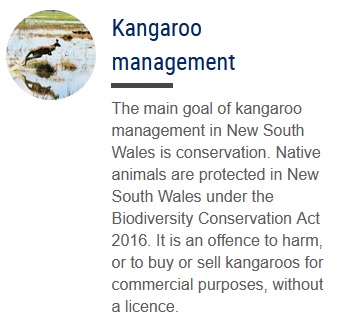
It is not CONSERVATION to eliminate a keystone bush regenerating species like the KANGAROO from the landscape.
Kangaroos manage their own breeding very effectively no human interference is required.
HUMAN BREEDING however is completely out of control.;
The Female Kangaroo has to lie level and still with birth canal exposed for 10 or more minutes
She licks the pathway to make it easier for the embyro to sucessfully make the journey.
She keeps the pouch clean and clear all the times;
so the embryo can make the journey from the birth canal to the pouch entrance and then down into the pouch to the small teats.
That process is not going to happen if Mum or the family are stressed.
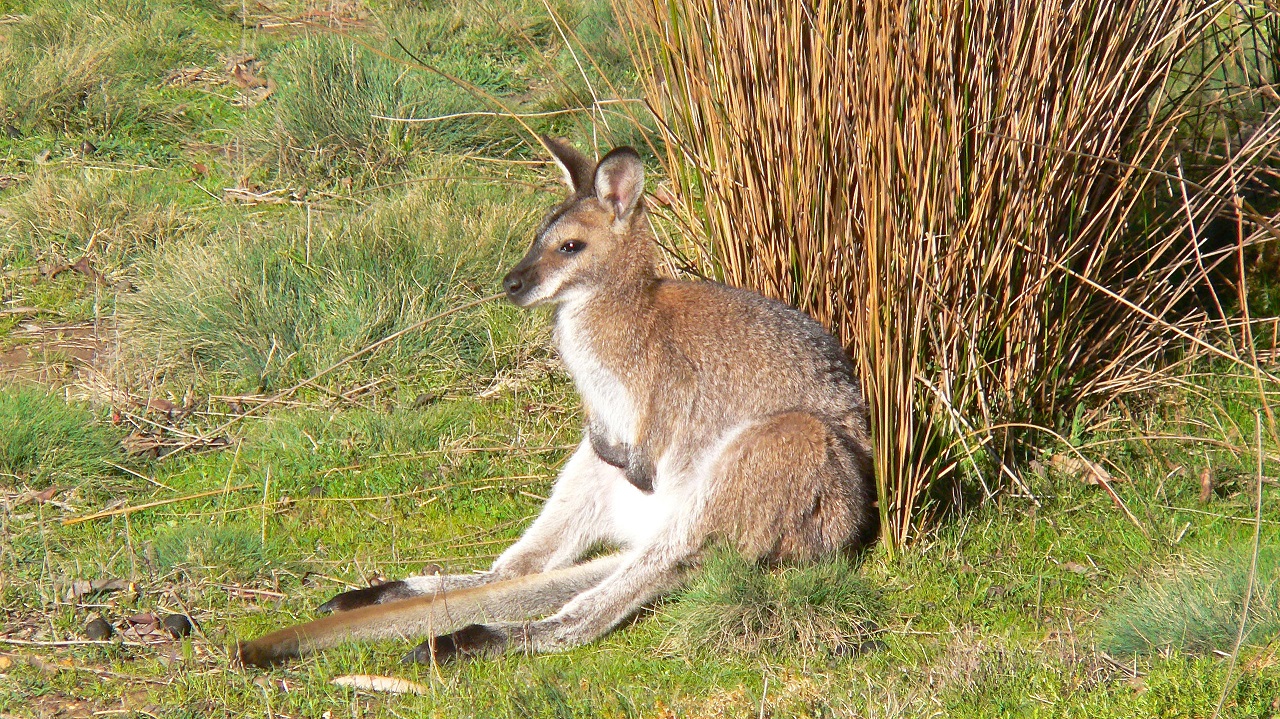
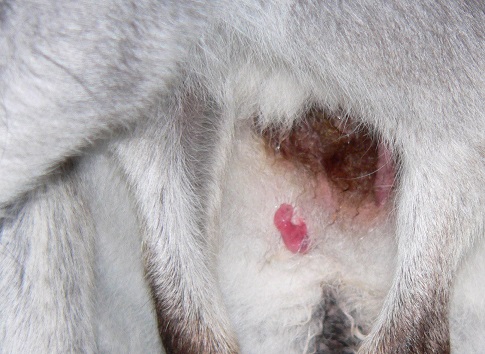
Photos by Mark Selmes
NPWS and DoCCEEW are allowing...
...the largest annual slaughter of land based wildlife on the planet,
...the numbers of kangaroo to dwindle so that there are local extinctions and
...the mob structure to be fractured and ultimately consist of mainly juvenile kangaroos
This is in direct violation of the implied duty of care embedded in the ACTs that they work under.
The only reason that the without a license' loophole exists in the 'it is an offence to harm kangaroos' statement
is so that the Commercial Kangaroo KILLING Industry can continually slaughter many millions of our precious Kangaroos
for profit and with no accountability.
ANY (Government or non Government) ORGANISATION, WHOSE MANDATE IS TO PROTECT NATIVE ANIMALS,
SHOULD NOT BE ALLOWED TO GIVE OUT PERMISSION
TO TRADE OR HARM THESE ANIMALS IN ANY WAY - IT IS A GROSS CONFLICT OF INTEREST.
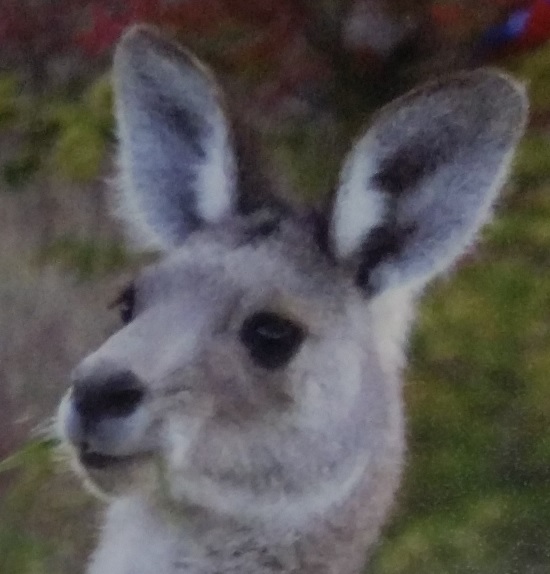
The National Parks and Wildlife Act 1974 also states in section 12 that ...
"The Service is to carry out such works and activities as the Minister may direct, either generally or in a particular case,
in relation to the conservation and protection of land reserved under this Act ...".
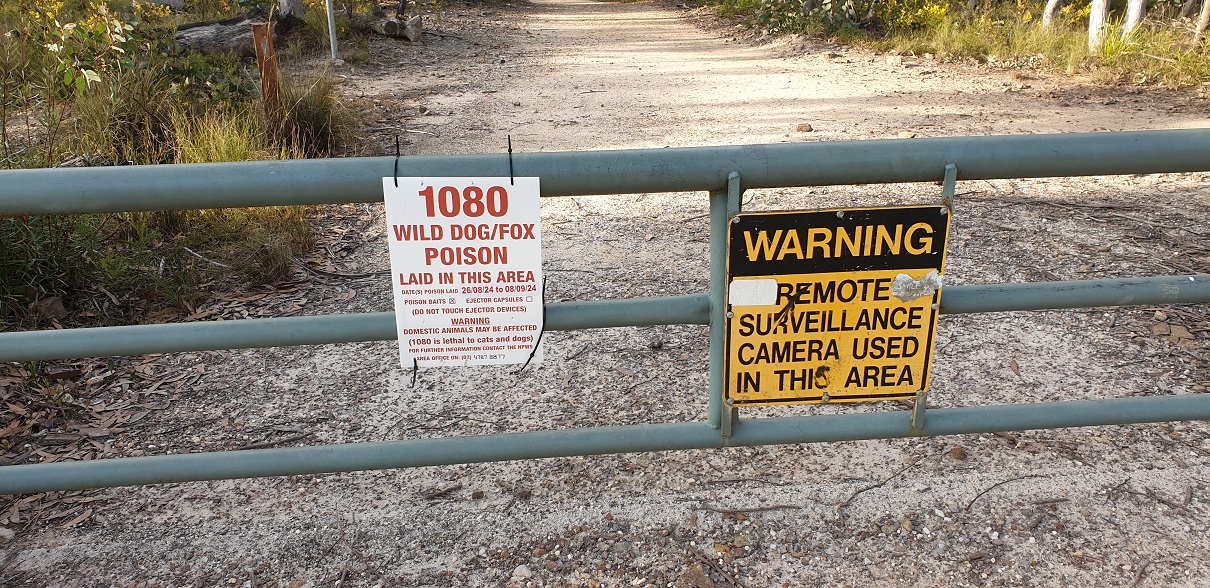
Despite this mandate NPWS put out 1080 poison into our National Parks (to supposedly kill dogs and foxes)
that kills native animals as it gets on the plants, into the soil and into the water table and water sources.
For more than six decades, the Government organisations (like DCCEEW and NPWS) who are responsible for the PROTECTION OF OUR KANGAROOS
have also been responsible for what they call "KANGAROO MANAGEMENT" which exists to feed a government sanctioned wildlife trade of Kangaroo body parts
run by the very influental and corrupt KANGAROO KILLING INDUSTRY.
Over the last few decades, the upper management of 'Animal welfare organisations', like the RSPCA and WIRES, have lost sight of the reason they exist
and are acting more like resource gathering than animal protection organisations
This means that only individual/small groups of volunteer KANGAROOS RESCUERS & CARERS
are in fact rescuing, protecting and caring for our kangaroos.
These Rescuers & Carers are the heros and heroines of our time;
but they are not being supported in any way by the government and other organisations
who are simultaneously failing completely in their mandate to protect kangaroos and their habitat.
OUR RESCUERS & CARERS
...
...are on call and often work 24-7.
...often struggle to make ends meet if not independently wealthy.
...have no relief crew to step in and look after the babies and injured animals that they have in care when they need a break.
...RSPCA and WIRES recently charged/convicted a well respected and highly skilled kangaroo rescuer and carer for saving a kangaroos life.
If government and/or charity organisations are trying to destroy the lives of our highly skilled, hardworking rescuers and carers;
then it is up to us, the PUBLIC, to act to assist & protect them.
We are suggesting that a support network of people is set up around each existing or incoming rescuer and/or carer;
to take on peripheral jobs like picking up supplies, transporting animals, feeding animals, cleaning or assisting in building or domestic chores.
<=============================================================>
Full Description of Animal Protection Organisations to our national icon and its habitat
The About-us page of the website of the non Government Agency - Australian Wildlife Rescue Organisation (WIRES) - says...
"Every year WIRES train hundreds of new volunteers in wildlife rescue and care
and we are dedicated to the ongoing recruitment of new volunteers
and the ongoing training of existing volunteers."
The fatal flaw in WIRES' intension of using volunteers to do the essential job of rescue and care of our native wildlife
is that those volunteers have to be independently wealthy (i.e. not need to work for a living) or they struggle to survive day to day.
As John of Monty's Rest says in the :...
"Sandra and I live in a caravan on the refuge, which is almost entirely self-funded through our pension money....
Help is so important. And when we get it, we really appreciate it.
Last year I had to treat the animals on army stretchers outside in the compound.
This year I’ve almost finished building a hospital with a treatment room in a 6m x 10m shed."

Our native wildlife Rescuers and Carers are the heros and heroines of our time.
They are on call and often work 24-7.
They often struggle to make ends meet.
They have no relief crew to step in and look after the babies and injured animals when they need a break.
As Tan of Warrumbungle Wildlife Rescue & Rehabilitation says...
"I know I said I was slowing down. Animals though, keep coming in with nowhere else to go.
The animals already here will still be here for another 18 months before they are old enough to release.
They still need feed and formula for all that time. So even if I stopped rescuing right now, I still have 18 months at least to feed and care for these babies.
I have health issues I need to address. The closest medical is 50ks away. 100km round trip. It's time consuming just to see a doctor.
If I have lots of joeys in care I literally haven't time between feeds to get there and home again, hence why I need to take less babies.
It seems it will take a while longer before that happens!!"
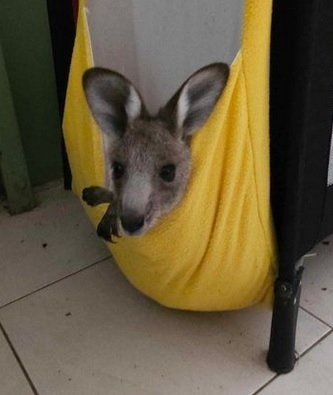
The current rescuers and carers have extensive expertise with native animals, far surpassing most veterinary doctors and nurses.
According to the WIRES FY23 impact report document, it is and has been getting huge grants from
the government, corporate sponsors and individuals through donation and legacies.
The problem is that that money is staying at the top level of management
and not filtering through to the overworked and unpaid rescuers and carers who are doing all the work.
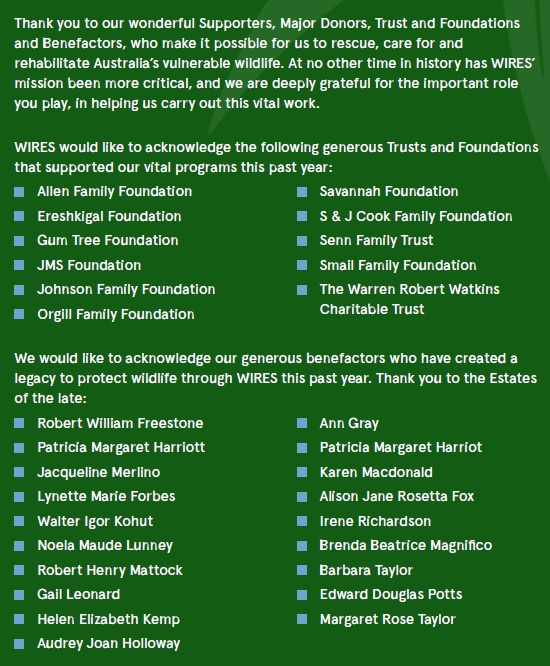
THE SOLUTION is that whether the Rescuers/Carers work through WIRES or not;
these exceptional and experienced people need to be give a significant grant each year to cover...
1. their cost of living bills,
2. a suitable residence to care for animals and to live in comfortably,
3. much needed infrastructure like hospital/clinic/rehabilitation facilities
4. medications, food and bedding for the animals.
5. vehicle, tools and other expenses for rescues
6. money to pay suitably qualified/experienced rescuers and carers who can give the primary Rescuers/Carers a break
7. time and money to allow Rescuers and Carers to get together to share practise of care for the animals in their charge
8. A network of volunteer supporters who can help out with everyday tasks/chores
9. Free Access to counselling like from Wildtalk - Caring for Wildlife Carers and other stress reducing activities
10. Acknowledge of experienced Rescuer and Carer expertise & knowledge developed using empirical study and true scientific method.
<=============================================================>
Full Description of Rescuers & Carers attitude to our national icon and its habitat
POSSUMWOOD AUSTRALIA
Possumwood Wildlife operates from a facility on the Lake George Escarpment on the southern tablelands of NSW.
It has a membership of around 70, and relies on voluntary staff, including veterinary nursing and a visiting veterinarian.
The directors of Possumwood Wildlife are highly qualified in medicine and research.
Each year the facility takes in around 200 wild animals who have been injured through wire fencing entanglement, motor vehicle collision,
dog/ fox attack, burns, misadventure and shooting or are suffering an illness.
When recovered, the animals are returned to the wild in a protected environment for a second chance of a free life.
Depending on their stage of development and the nature of their injury animals may stay with us for just a few weeks or more than a year.
Well over 6000 wild animals have directly benefited from their work.
They have been running advanced macropod training courses for a number of years to groups of around 50 carers in NSW.
The courses are highly regarded with evaluations always rated as ‘excellent’.
The wildlife recovery program at Possumwood is focussed in two areas:...
High level emergency first aid for injured and sick mammal wildlife of all sizes and ages on a 24 hour, seven days a week basis.
Visiting veterinarians and veterinary nurses as well as an experienced medical practitioner assist with this.
The provision of long-term treatment and support for emotional trauma.
Wild animals lead emotional lives and we know of no other Australian wildlife program of support that targets the long term trauma recovery needs of animals.
POSSUMWOOD values are ...
...To build a trusting relationship with the injured and sick animals in our care; and to build confidence in each animal’s ability to recover.
...To work professionally with specialist wildlife veterinary expertise.
...To give the sick, traumatised and injured wild animal as much time as is necessary for recovery in a safe and caring environment.
...To return the recovered animal to its natural habitat and to monitor its continued success in the wild.
...To advance our knowledge of wildlife wellbeing and trauma through observation, engagement, research and publication.
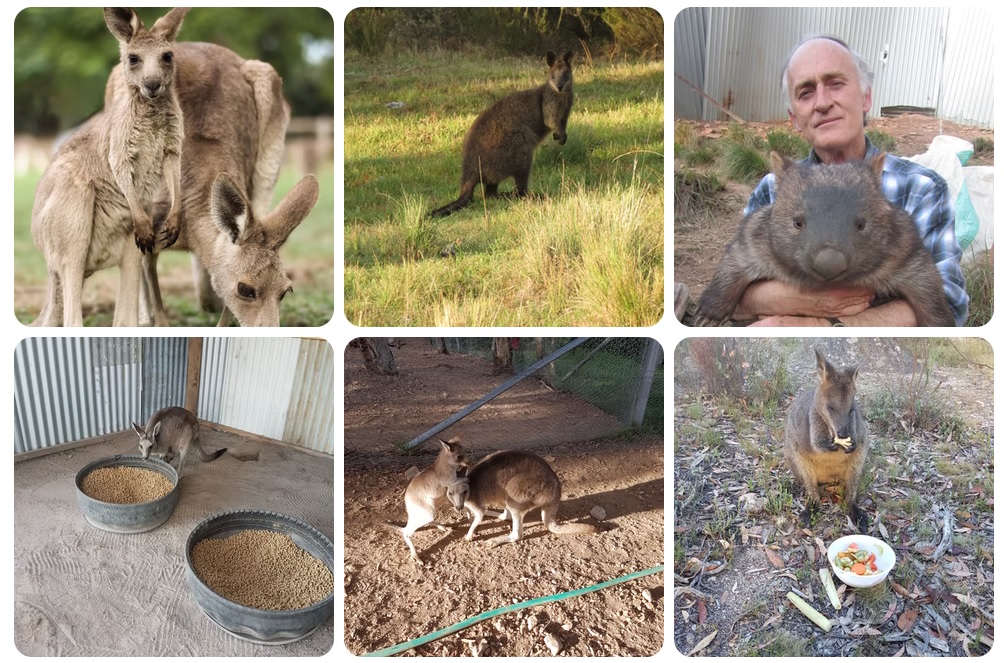
Photo source Possumwood
<=============================================================>
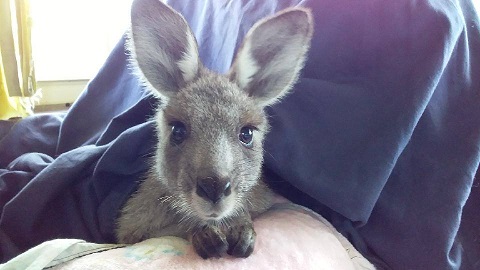
Photo by Greg
<






















